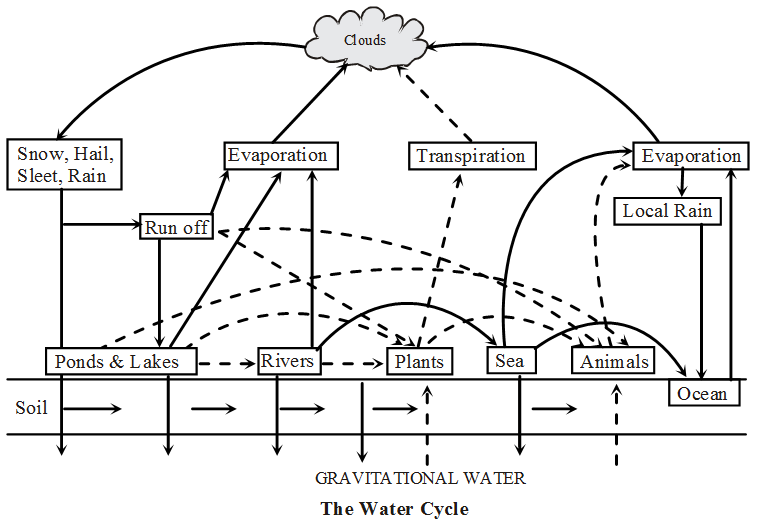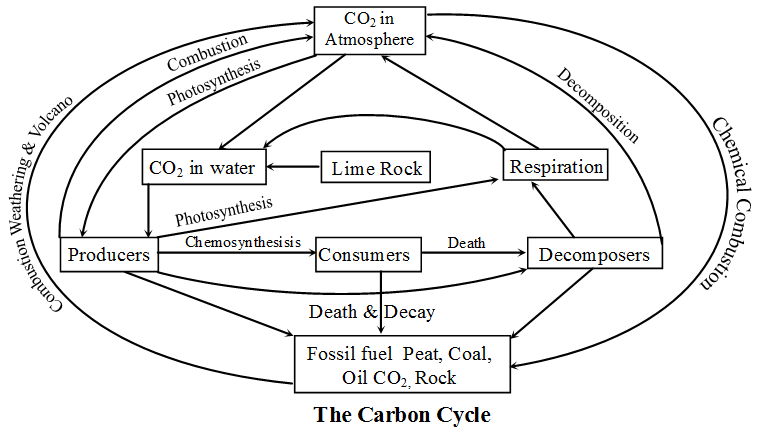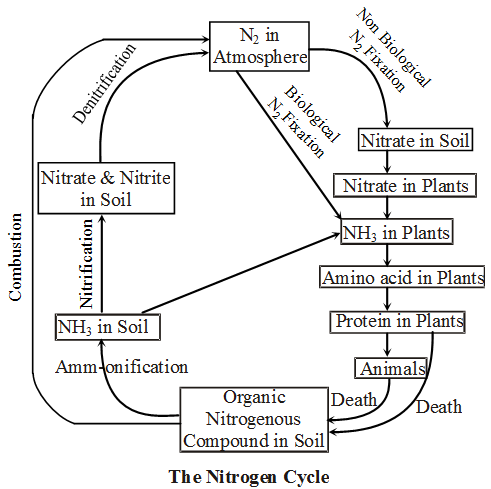Nitrogen Fixation and Nitrogen Cycle
Nitrogen fixation is the process by which free atmospheric nitrogen is converted into nitrogen compounds. In nature, nitrogen is fixed during lightning or by nitrogen-fixing bacteria and blue-green algae.
Leguminous plants like pea and soya bean have the nitrogen fixing bacteria Rhizobium in their root nodules. The nitrogen fixed by these bacteria is taken up by the plants and stored in their tissues as plant proteins. This stored nitrogen passes from these plants to herbivores, and then to carnivores.

When these plants and animals die, the nitrogen compounds present in their bodies are decomposed and returned to the soil. Some of these compounds are again absorbed by plants, while some are converted to nitrogen and returned to the atmosphere by special bacteria present in the soil. This cycling of nitrogen, between the atmosphere, soil, and organisms, is called nitrogen cycle.
Nitrogen cycle is a natural cyclic process in which atmospheric nitrogen enters the soil and becomes a part of living organisms, before returning to the atmosphere. A simplified representation of this process is shown in figure.



